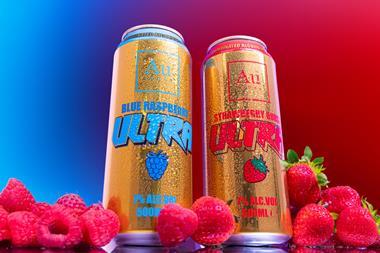>>What goes to make a winner - Andy Andrews, Guest Professor of General Management, IESE Business School, barcelona
The food and drinks industry is undergoing exciting dramatic changes. From the trend to convenience to specialised or ethnic meals plus the increasing concerns about food security, sourcing and tracking, opportunities for innovation abound. The introduction of modern information technology is changing the value chain, creating process and logistics system innovation potential that will reduce costs, increase efficiencies and change the structure of the industry.
Most chief executive officers in the food sector want their companies to be high performers, but few achieve it.
The dramatic change that we have seen in the standard of living of most people in the developed world has been fuelled by innovation channelled by companies. Still, however, more and more companies find it hard to sustain their growth through innovation, and slowly decline into mediocrity and stagnation.
The reason for this lies with the management team. Many have fallen into the trap of status quo. Their traditional training and experience have deprived them of creativity and pushed them into the role of caretakers and undertakers who have ceased to manage.
Quite simply, today’s managers don’t understand their industries’ needs or the simple key drivers of innovation it takes to build successful business models: vision, insight, courage, discipline and speed.
What we are seeing is a drift towards a sustained innovation - the kind that maintains the status quo and which leads to average performance, as I told 3i’s European Food and Drink conference this week.
The few, great growth companies, while not ignoring sustaining innovative activity, also focus on radical innovation - dramatic innovation that will propel the business into the top league of performance.
If the food sector is to be truly successful, its management needs to develop a careful understanding of its industry. It needs to learn to live in their customers’ lives so that they can sense new opportunities and technologies before the competition.
Two examples of companies that have done this remarkably well are Starbucks and Harley-Davidson. Both businesses have the key drivers of innovation it takes to make a successful company.
Starbucks management understands its
customers’ lives and understands that they are not only interested in a cup of coffee but also in an experience.
Harley-Davidson innovated their motorcycles and business model to enable customers to feel rough and tough and repositioned the brand and product so well that customers are prepared to tattoo the logo on their bodies!
What we will see if other companies do not follow this type of lead will be a slow and steady fall in their returns to average rates, making market rating value fall to industry averages.
Those companies then become prime candidates for failure or takeover by stronger competition.
Too many managers pursue the wrong growth paths and lead their firms into economic wastelands in a mindless drive for higher market share in dying markets, or pursuing cost benefits through economies of scale and business expansion that create complexity and inefficiency.
Companies should adopt an innovative strategy and culture based on the success of innovative companies.
Ultimately, the companies that will win in the next 10 years or so will be those that are able to innovate continuously, although this kind of innovation and survival will not come easily or by accident or through any happy coincidences. It will be the result of thinking in new ways about the industry, customers and business models and applying a consistent process to ensure success.
The food and drinks industry is undergoing exciting dramatic changes. From the trend to convenience to specialised or ethnic meals plus the increasing concerns about food security, sourcing and tracking, opportunities for innovation abound. The introduction of modern information technology is changing the value chain, creating process and logistics system innovation potential that will reduce costs, increase efficiencies and change the structure of the industry.
Most chief executive officers in the food sector want their companies to be high performers, but few achieve it.
The dramatic change that we have seen in the standard of living of most people in the developed world has been fuelled by innovation channelled by companies. Still, however, more and more companies find it hard to sustain their growth through innovation, and slowly decline into mediocrity and stagnation.
The reason for this lies with the management team. Many have fallen into the trap of status quo. Their traditional training and experience have deprived them of creativity and pushed them into the role of caretakers and undertakers who have ceased to manage.
Quite simply, today’s managers don’t understand their industries’ needs or the simple key drivers of innovation it takes to build successful business models: vision, insight, courage, discipline and speed.
What we are seeing is a drift towards a sustained innovation - the kind that maintains the status quo and which leads to average performance, as I told 3i’s European Food and Drink conference this week.
The few, great growth companies, while not ignoring sustaining innovative activity, also focus on radical innovation - dramatic innovation that will propel the business into the top league of performance.
If the food sector is to be truly successful, its management needs to develop a careful understanding of its industry. It needs to learn to live in their customers’ lives so that they can sense new opportunities and technologies before the competition.
Two examples of companies that have done this remarkably well are Starbucks and Harley-Davidson. Both businesses have the key drivers of innovation it takes to make a successful company.
Starbucks management understands its
customers’ lives and understands that they are not only interested in a cup of coffee but also in an experience.
Harley-Davidson innovated their motorcycles and business model to enable customers to feel rough and tough and repositioned the brand and product so well that customers are prepared to tattoo the logo on their bodies!
What we will see if other companies do not follow this type of lead will be a slow and steady fall in their returns to average rates, making market rating value fall to industry averages.
Those companies then become prime candidates for failure or takeover by stronger competition.
Too many managers pursue the wrong growth paths and lead their firms into economic wastelands in a mindless drive for higher market share in dying markets, or pursuing cost benefits through economies of scale and business expansion that create complexity and inefficiency.
Companies should adopt an innovative strategy and culture based on the success of innovative companies.
Ultimately, the companies that will win in the next 10 years or so will be those that are able to innovate continuously, although this kind of innovation and survival will not come easily or by accident or through any happy coincidences. It will be the result of thinking in new ways about the industry, customers and business models and applying a consistent process to ensure success.












No comments yet